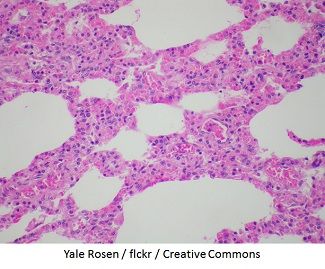Tracking an RSV Outbreak in the NICU Setting
How closely related were the RSV strains in a Louisiana NICU outbreak?

There were 2 distinct introductions of respiratory syncytial virus (RSV) in a neonatal intensive care unit (NICU) in an 11-day span, according to a paper published in the Journal of the Pediatric Infectious Disease Society.
The Louisiana Department of Health was alerted to 7 RSV infections within a single NICU at a large, level III NICU with 5 wards in December 2017.
Investigators, from the US Centers for Disease Control and Prevention (CDC), wrote the NICU is of particular concern for RSV outbreaks, due to the risk for severe disease in young infants, especially those born prematurely or with congenital abnormalities or other comorbidities, who encompass most of the NICU population.
Investigators tracked the outbreak using whole genome sequencing to better understand the relatedness of viruses among the patients. The facility’s visitation policy stipulated that parents are invited to stay overnight with their infant, the study authors wrote, and siblings over the age of 2 are allowed to visit during daytime hours; however, all guests must wash their hands prior to visitation.
Additional guidelines are in place during flu season, which allow for guests’ temperature checks upon entrance to the unit and barring any febrile visitors or those reporting respiratory symptoms from entering.
Once the first patient was identified with RSV, the facility initiated enhanced surveillance for RSV, including nasopharyngeal specimen collection from NICU patients with respiratory or other RSV-related symptoms. Swabs were collected from all 7 patients within 2 days of symptom onset and initially tested at the hospital lab. They were sent to the CDC lab for further analysis, investigators wrote.
Patient 1 was born at the facility and discharged 30 days prior to readmission. That infant was admitted to the NICU at age 34 days for acute respiratory distress. RSV infection was confirmed via PCR testing, and was considered day 0. Between days 1 8, the facility observed 6 additional patients with respiratory symptoms. They were diagnosed with RSV. Investigators wrote that RSV likely spread to new patients through shared staff and/or equipment.
The rest of the patients were also born at the facility (preterm, ranging from 25 to 36 weeks) and none were on respiratory support prior to symptom onset.
Investigators described the NICU patients: 6 were preterm and 1 had chronic lung disease. Additionally, 3 patients required respiratory support after symptom onset. None of the infants died, they said.
Notably, 6 patients in 2 wards were located in adjacent single-family rooms. The infants’ symptoms included congestion, cough, tachypnea, and poor feeding.
The subsequent CDC lab tests showed that 6 of 7 infected patients were part of the same cluster. The seventh patient was admitted from the community presenting respiratory symptoms. That patient had a genetically distinct virus unrelated to the rest of the patients, the investigators determined.
Aside from the 7 NICU patients who developed RSV, no other RSV infections were reported. All NICU health care workers were asked to report any respiratory symptoms at the start of their shift. No NICU health care workers reported any symptoms and none were tested for RSV, investigators wrote.
Parents of NICU patients were informed of guidelines in place in the NICU through a letter. Additional precautions were initiated after discussion with the Louisiana Health Department and the CDC, including restricting visitation from children under 12 years, use of facemasks during visitation from nonstaff, increased hand hygiene, enhanced environmental cleaning, and cohorting of staff.
“Policies that ban visitation by persons with respiratory symptoms and all young children when RSV is circulating may help prevent introduction of RSV into healthcare settings,” investigators wrote. “This cluster also highlights the importance of early recognition of RSV, which should be considered when evaluating NICU patients for respiratory symptoms or sepsis, particularly during RSV season.”
